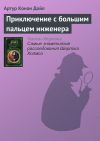Текст книги "Неизвестная история человечества"

Автор книги: Ричард Томпсон
Жанр: Зарубежная образовательная литература, Наука и Образование
сообщить о неприемлемом содержимом
Текущая страница: 33 (всего у книги 34 страниц)
Holmes, W. H. (1919) Handbook of aboriginal American antiquities. Part I. Smithsonian Institution, Bulletin 60… Hood, D. (1964) Davidson Black. Toronto, University of Toronto.
Hooijer, D. A. (1951) The age of Pithecanthropus. American Journal of PhysicalAnthropology, 9: 265—281.
Hooijer, D.A. (1956) The lower boundary of the Pleistocene in Java and the age of Pithecanthropus. Quatemaria, 3: 5-10.
Hopwood, A. T. (1932) The age ofOldoway man. Man. 32: 192—195.
Hough, J. L. (1958) Geology of the Great Lakes.Vrbana, University of Illinois.
Howell, R C. (1966) Observations on the earlier phases of the European Lower Paleolithic. American Anthropologist, 68(2, part 2): 89.
Howell, R C. (1978) Hominidae. In Maglio, V. J., and Cooke, H. B. S., eds. Evolution of African Mammals. Cambridge, Harvard University.
Howells, W. W. (1977) Hominid fossils. In Howells, W. W„and Tsuchitani, P. J., eds. Palaeoanthropology in the People's Republic of China. Washington, D. C., National Academy of Sciences, pp. 66-77.
Hrdlicka.A. (1907) Skeletal remains suggesting or attributed to early man in North America. Smithsonian Institution. Bureau of American Ethnology. Bulletin33.
Hurford, A. J., Gleadow, A. J. W, and Naeser, C. W. (1976) Fission-track dating of pumice from the KBS Tuff, East Rudolf, Kenya. Nature, 263: 738—740.
Huxley, Т. H. (1911) Man's Place in Nature. London, Macmillan.
Huyghe, P. (1984) The search for Bigfoot. Science Digest, September, pp. 56 – 59, 94, 96.
Ingalls, A. G. (1940) The Carboniferous mystery. Scientific American. 162: 14.
Irving, W. N. (1971) Recent early man research in the north. Arctic Anthropology.8(2): 68-82.
Irwin-Williams, C. (1978) Summary of archaeological evidence from the Valsequillo region, Puebia, Mexico. In Bowman, D. L., ed. Cultural Continuity in Mesoamerica. London, Mouton, pp. 7-22.
Irwin-Williams, C. (1981) Comments on geologic evidence forage of deposits at Hueyatlaco archaeological site, Valsequillo, Mexico. Quaternary Research, 16: 258.
Isaac, G.L.(1978) The archaeological evidence for the activities of early African hominids. In Jolly, C. J., ed. Early Hominids of Africa. London, Duckworth, pp. 219—254.
Issel, A. (1868) Resume des recherches concernant 1'anciennete de 1'homme en Ligurie. Congres International d'Anthropologie et d'ArcheologiePrehistoriques, Paris 1867, Compte Rendu, pp. 75-89. (*)
Issel, A. (1889) Cenni sulla giacitura dello scheletro umano recentmente scoperto nel pliocene di Castenedolo. Bullettino di Paletnologia Italiana, 15: 89-109. (*)
Jacob, К., Jacob, C., and Shrivastava, R. N. (1953) Spores and tracheids of vascular plants from the Vindhyan System, India: the advent of vascular plants. Nature, 172: 166—167.
Jacob, T. (1964) A new hominid skull cap from Pleistocene Sangiran. Anthropologica, New Series, 6: 97-104.
Jacob, T. (1966) The sixth skull cap of Pithecanthropus erectus. American Journalof Physical Anthropology, 25: 243—260.
Jacob, T. (1972) The absolute age of the Djetis beds at Modjokerto. Antiquity46: 148.
Jacob, T. (1973) Palaeoanthropological discoveries in Indonesia with special reference to finds of the last two decades. Journal of Human Evolution, 2: 473—485.
Jacob, Т., and Curtis, G. H. (1971) Preliminary potassium-argon dating of early man in Java. Contribution of the University of California Archaeological Research Facility. 12: 50.
Jessup.M. К. (1973) The Caseforthe UFO. Garland, Texas, Uaro Manufacturing Company.
Jia, L. (1975) The Cave Home of Peking Man. Beijing, Foreign Languages Press.
Jia, L. (1980) Early Man in China. Beijing, Foreign Languages Press.
Jia, L. (1985) China's earliest Palaeolithic assemblages. In Wu, R., and Olsen, J. W., eds. PalaeoanthropologyandPalaeolithic Archaeology of the People'sRepublic of China. Orlando, Academic Press, pp. 135—145.
Jimison, S. (1982) Scientists baffled by space spheres. Weekly World News, July 27.
Johanson, D. C. (1976) Ethiopia yields first 'family' of man. National Geographic.] 50: 790-Sl.
Johanson, D.C., and Coppens, Y. (1976) A preliminary anatomical description of the first Plio-pleistocene hominid discoveries in the Central Afar, Ethiopia.American Journal of Physical Anthropology, 45: 217—234.
Johanson, D. С., and Edey, M. A. (1981) Lucy: The Beginnings of Humankind. New York, Simon and Schuster.
Johanson, D. C„Masao. F. T„Eck. G. G., White, T. D., Walter, R. C., Kimbel, W. H., Asfaw, В., Manega, P., Ndessokia, P., and Suwa, G. (1987) New partial skeleton of Homo habilis from Olduvai Gorge, Tanzania. Nature, 327: 205 – 209.
Johanson, D. C„and Shreeve, J. (1989) Lucy's Child. New York, William Morrow.
Johanson, D. C., and White, T. D. (1979) A systematic assessment of the early African hominids. Science. 203: 321—330.
Jones, E. (1953) The Life and Work of Freud. Vol. 1. New York, Basic Books.
Josselyn, D. W. (1966) Announcing accepted American pebble tools: the Lively Complex of Alabama. Anthropological Journal of Canada, 4(1): 24-31.
Kahike, H. (1961) On the complex Stegodon-Ailuropoda fauna of southern China and the chronological position of Gigantopithecus blacki von Koenigswald. Vertebrata Palasiatica, 5(2): 83-108.
Keith, A. (1928) The Antiquity of Man. Vol. 1. Philadelphia, J. B. Lippincott.
Keith, A. (1931) New discoveries relating to the antiquity of man. New York, W. W. Norton.
Keith, A. (1935) Review ofTTie Stone Age Races of Kenya, by L. S. B. Leakey. Nature, 135: 163—164.
Kennedy, G. E. (1983) Femoral morphology m Homo erectus. Journal of HumanEvolution, 72. 587—616.
Klaatsch, H. (1907) Review of La question de I'homme tertiaire by L. Mayet. Zeitschrift fur Ethnologic, 39: 765—766. (*)
Klein, C. (1973) Massif Armoricain et Bassin Parisien. Strasbourg, Association des Publications pres les Universites de Strasbourg. 2 vols.
Kounnisky, J., ed. (1977) Illustrated Encyclopedia of Minerals and Rocks. London, Octopus.
Krantz.G. S. (1975) An explanation for the diastema of Javan erectu.? skull IV. In Tuttle, R. H., ed. Paleoanlhropology: Morphology and Paleoecology. The Hague, Mouton, pp. 361—370.
Krantz, G. S. (1982) Review of Halpin, M., and Ames, M. M., eds. ManlikeMonsters on Trial: Early Records and Modern Evidence. Cryptowology.I: 94-100.
Krantz, G. S. (1983) Anatomy and dermatoglyphics of three Sasquatch footprints. Cryptowology, 2: 53-81.
Kurten, B. (1968) Pleistocene Mammals of Europe. Chicago, Aldine.
Laing, S. (1893) Problems of the Future. London, Chapman and Hall.
Laing, S. (1894) Human Origins. London, Chapman and Hall.
Latimer, В., and Lovejoy, С. О. (1990а) Hallucial metatarsal joint in Australopithecus afarensis. American Journal of Physical Anthropology, 82: 125—133.
Latimer, В., and Lovejoy, C. 0. (1990b) Metatarsophalangeal joint of Australopithecus afarensis. American Journal of Physical Anthropology, 83: 13-23.
Latimer, В., Ohman, J. C., and Lovejoy, C. O. (1987) Talocrural joint in African hominoids: implications for A ustralopithecus afarensis. American Journal ofPhysical Anthropology, 74: 155—175.
Laussedat, A. (1868) Sur unc machoire de Rhinoceros portant des entailles profondes trouvee a Billy (Allier), dans les formations calcaires d'eau douce de la Limagne. Comptes Rendus de I'Academie des Sciences, 66: 752—754. (*)
Le Gros Clark, W. E., and Campbell, B. G. (1978) The Fossil Evidence for HumanEvolution. Chicago, University of Chicago.
Leakey, L. S. B. (1928) The Oldoway skull. Nature, 121: 499—500.
Leakey, L. S. B. (1931) The Stone Age Cultures of Kenya Colony. Cambridge, Cambridge University.
Leakey, L. S. B. (1932a) The Oldoway human skeleton. Nature, 129: 721—722.
Leakey, L. S. B. (1932b) The Oldoway human skeleton. Nature. 130: 578.
Leakey, L. S. В. (1935) The Stone Age Races of Kenya. London, Oxford University Press.
Leakey, L. S. B. (1936) Fossil human remains from Kanam and Kanjera, Kenya colony. Nature, 138: 643.
Leakey, L.S. B. (1960a) Recent discoveries at Olduvai Gory. Nature, ] 88: 1050—1052.
Leakey, L. S. B. (1960b) Finding the world's earliest man. National Geographic, 118: 420—435.
Leakey, L. S. В. (1960с) The origin of the genus Homo. In Tax, S., ed. Evolutionafter Darwin. Vol. II. Chicago, Chicago University.
Leakey, L. S. B. (1960d)Adam 's Ancestors, 4th edition. New York, Harper& Row.
Leakey, L. S. B. (1968) Bone smashing by Late Miocene Hominidae. Nature, 218: 528—530.
Leakey, L. S. B. (1971) Homo sapiens in the Middle Pleistocene and the evidence of Homo sapiens' evolution. In Bordes, F, ed. The Origin of Homo sapiens. Paris, Unesco, pp. 25-28.
Leakey, L. S. B. (1972) By the Evidence: Memoirs, 1932—1951. New York, Harcourt Brace Jovanovich.
Leakey, L. S. B. (1979) Calico and early man. Quarterly of the San BemardinoCounty Museum Association 26(4): 91-95.
Leakey, L. S. B, Hopwood, A. T., and Reck, H. (1931) Age of the Oldoway bone beds, Tanganyika Territory, Nature, 128: 724.
Leakey, L. S. В., Reck, H., Boswell, P. G. H., Hopwood, A. T., and Solomon, J. D. (1933) The Oldoway human skeleton. Nature, 131: 397—398.
Leakey, L. S. В., Tobias, P. V., and Napier, J. R. (1964) A new species of the genus Homo from Olduvai Gorge. Nature, 202: 7-9.
Leakey, M. D. (1971) Olduvai Gorge. Vol. 3. Excavations in BedsIandII, 1960—1963. Cambridge, Cambridge University.
Leakey, M. D. (1978) Olduvai fossil hominids: their stratigraphic positions and locations. In Jolly, C. J., ed. Early Hominids of Africa. London, Duckworth, pp. 3-16.
Leakey, M. D. (1979) Footprints in the ashes of time. National Geographic155: 446—457.
Leakey, R. E. (1973a) Evidence for an advanced Plio-Pleistocene hominid from East Rudolf, Kenya. Nature, 242: 447—450.
Leakey, R. E. (1973b) Skull 1470. National Geographic, 143: 819—829.
Leakey, R.E. (1973с) Further evidence of Lower Pleistocene hominids from East Rudolf, North Kenya, 1972. Nature, 242: 170—173.
Leakey, R. E. (1984) One Life. Salem, New Hampshire, Salem House.
Leakey, R. E., and Lewin, R. (1977) Origins. New York, Dutton.
Leakey, R. E., and Lewin, R. (1978) People of the Lake: Mankind and ItsBeginnings. Garden City, Anchor Press.
Lee, R. E. (1983) «For I have been a man, and that means to have been a fighter.» Anthropological Journal of Canada, 21: 11-13.
Lee, Т. E. (1964) Canada's national disgrace. Anthropological Journal of Canada 27,»; 28-31.
Lee, Т. E. (1966a) Untitled editorial note on the Sheguiandah .AnthropologicalJournal of Canada. 4(4): 18-19.
Lee, Т. E. (1966b) Untitled editorial note on the Sheguiandah .AnthropologicalJournal of Canada, 4(2): 50.
Lee, Т. Е. (1968) The question of Indian origins, again. Anthropological Journalof Canada, 6(4): 22-32.
Lee, Т. E. (1972) Sheguiandah in retrospect. Anthropological Journal of Canada, 10(1): 28-30.
Lee, Т. E. (1977) Introduction to Carter, G. F., On the antiquity of man in America. Anthropological Journal of Canada, 15(1): 2-4.
Lee, Т. Е. (1981) A weasel in the woodpile. Anthropological Journal of Canada, 19(2): 18-19.
Lee, T. E. (1983) The antiquity of the Sheguiandah site. Anthropological Journal of Canada, 21: 46-73.
Legge. A. J. (1986) Seeds of discontent. In Gowlett, J.A. J„and Hedges, R. E. M., eds. Archaeological Results from Accelerator Dating. Oxford, Oxford University Committee for Archaeology, pp. 13-21.
Leriche, M. (1922) Les terrains tertiaires de la Belgique. Congres GeologiqueInternational (13e, Bruxelles), Livret – Guide des Excursions en Belgique, A4: 1-46.
Lewis, 0. J. (1980) The joints of the evolving foot, part III. Journal of Anatomy, 131: 275—298.
Li, P., Qian, F., Ma, X., Pu, Q., Xing, L., and Ju, S. (1976) A preliminary study of the age of Yuanmou man by paleomagnetic techniques. Scientia Sinica, 6: 579—591.
Li, R., and Lin, D. (1979) Geochemistry of amino acid of fossil bones from deposits of Peking man, Lantian man, and Yuanmou man in China. ScientiaGeologica Sinica, 1: 56-61.
Liu, D., and Ding, M. (1983) Discussion on the age of Yuanmou man. ActaAnthropologica Sinica, 2(1): 40-48.
Lisowski, F. P., Albrecht, G. H., and Oxnard, C. E. (1974). The form of the talus in some higher primates: a multivariate study. American Journal of PhysicalAnthropology, 41: 191—216.
Lohest, M., Fourmarier, P., Hamal-Nandrin, J., Fraipont, C., and Capitan, L. (1923) Les silex d'lpswich: conclusions do 1'enquete de 1'Institut International d'Anthropologic. Revue Anthropologique, 33: 44-67. (*)
Longin, R. (1971) New method of collagen extraction for radiocarbon dating. Nature, 230: 241—242.
Lorenzo, J. L. (1978) Early man research in the American hemisphere: appraisal and perspectives. In Bryan, A. L., ed. Early Man in America From a Circum-Pacific Perspective. Edmonton. Archaeological Researches International, pp. 1-9.
Lorenzo, J. L., and Mirambell, L. (1986) Preliminary report on archaeological and paleoenvironmental studies in the area of El Cedral, San Luis Potosi, Mexico 1977—1980. In Bryan, A. L., ed. New Evidence/or the Pleistocene Peoplingof the Americas. Orono, Maine, Center for the Study of Early Man, pp. 106—111.
Lovejoy, С. О. (1988) Evolution of human walking. Scientific American, 259(5): 118—125.
Lyell, Charles (1863) Antiquity of Man. London, John Murray.
Ma, X., Qian, F., Li, P., and Ju, S. (1978) Paleomagnetic dating of Lantian man. Vertebrate PalAsiatica. 16(4): 238—243.
MacCurdy, G. G. (1924a) Human Origins: A Manual of Prehistory. Vol. 3. The OldStone Age and the Dawn of Man and His Arts. New York, D. Appleton.
MacCurdy, G. G. (1924b) What is an eolith? Natural History. 24: 656—658.
Macalister, R.A. S. (1921) Textbook of'European Archaeology. Vol. 1. PaleolithicPeriod. Cambridge, Cambridge University.
Maglio, V. J. (1972) Vertebrate faunas and chronology of hominid-bearing sediments east of Lake Rudolf,, Kenya. Nature, 239: 379—385.
Maglio, V. J. (1973) Origin and evolution of the Elephantidae. American Philosophical Society Transactions, 63: 1-149.
Malde, H. E., and Steen-McIntyre, V. (1981) Reply to comments by C. Irwin-Williams: archaeological site, Valsequillo, Mexico. Quaternary Research, /6:418—421.
Mallery, A. H. (1951) Lost America: The Story of Iron-Age Civilization Prior toColumbus. Washington, D. C., Overlook. Mammoth Trumpet (1984) Life in ice age Chile. /(//• 1.
Marks, P. (1953) Preliminary note on the discovery of a new jaw ofMeganthropus von Koenigswald in the lower Middle Pleistocene ofSangiran, central Java. Indonesian Journal of Natural Science, 109(1); 26-33.
Marshall, L. G., Pascual, R., Curtis, G. H., and Drake, R. E. (1977) South American geochronology: radiometric time scale for Middle to Late Tertiary mammal-bearing horizons in Patagonia. Science, 195: 1325—1328.
Marshall, L. G., Webb, S. D., Sepkoski, Jr., J. J. and Raup, D. M, (1982) Mammalian evolution and the great American interchange. Science. 215: 1351—1357.
Marzke, M. W. (1983) Joint function and grips of the Australopithecus afarensis hand, with special reference to the region of the capitate. Journal of Human Evolution. 12: 197—211.
McHenry, H. M. (1972) Postcranial skeleton of Early Pleistocene hominids. Ph.D. thesis, Harvard University.
McHenry, H. M. (1973) Early hominid humerus from East Rudolf, Kenya. Science, /«0:739—741. McHenry, H.M., and Corruccini, R. S. (1975) Distal humerus in hominoid evolution. Folia Primatologica 23: 227—244.
Meister, W. J. (1968) Discovery oftrilobite fossils in shod footprint of human in «Trilobite Bed» – a Cambrian formation. Antelope Springs, Utah. Creation Research Quarterly. 5(3): 97-102.
Meldau, F. J. (1964) Why We Believe in Creation, Not in Evolution. Denver, Christian Victory.
Melleville, M. (1862a) Foreign intelligence. The Geologist, 5: 145—148.
Melleville, M. (1862b) Note sur un objet travaille de main d'homme trouve dans les lignites du Laonnois. Revue Archeologique. 5: 181—186. (*)
Merriam, J. C. (1938) The Published Papers of John Campbell Merriam. Vol. IV. Washington, D. C., Carnegie Institution.
Michels, J. W. (1973) Dating Methods in Archaeology. New York, Seminar Press.
Millar, Ronald (1972) The Piltdown Men. London, Victor Gollancz.
Miller, M. E., and Caccioli, W. (1986) The results of the New World Explorers Society Himalayan Yeti Expedition. Cryptozoology. 5: 81-84.
Minshall, H. L. (1989) Buchanan Canyon: Ancient Human Presence in theAmericas. San Marcos, Slawson Communications.
Moir, J. R. (1916) Pre-Boulder Clay man. Nature, 98: 109.
Moir, J. R. (1917a) A series of mineralized bone implements of a primitive type from below the base of the Red and Coralline Crags of Suffolk. Proceedingsof the Prehistoric Society of East Anglia, 2: 116—131.
Moir, J. R. (1917b) Apiece of humanly-shaped wood from the Cromer Forest Bed. Man. 17: 172—173.
Moir. J. R. (1919) A few notes on the sub-Crag flint implements. Proceedings ofthe Prehistoric Society of East Anglia, 3:158—161.
Moir, J. R. (1923) An early palaeolith from the glacial till at Sidestrand, Norfolk. The Antiquaries Journal, 3: 135—137.
Moir, J. R. (1924) Tertiary man in England. Natural History. 24: 637—654.
Moir, J. R. (1927) The Antiquity of Man in East Anglia. Cambridge, Cambridge University.
Moir, J. R. (1929) A remarkable object from beneath the Red Crag. Man, 29: 62-65.
Moir, J. R. (1935) The age of the pre-Crag flint implements. Journal of the RoyalAnthropological Institute, 65: 343—364.
Mongait, A. (1959) Archaeology in the U.S.S.R. Moscow, Foreign Languages Publishing House.
Morlan, R. E. (1986) Pleistocene archaeology in Old Crow Basin: a critical reappraisal. In Bryan, A. L… cd. New Evidence for the Pleistocene Peoplingof the Americas. Orono, Maine, Center for the Study of Early Man, pp. 27-48.
Mozino, J. M. (1970) Noticias de Nulka: An Account of Nootka Sound in /792. Translated and edited by Iris Higbie Wilson. Seattle, University of Washington.
Napier, J. R. (1962) Fossil hand bones from Olduvai Gorge. Nature. 196: 400—411.
Napier, J. R. (1973) Bigfoot: The Yeti and Sasqualch in Myth and Reality. New York, Dutton.
Nelson, D. E., Vogel, J. S., Southon, J. R., and Brown, T. A. (1986) Accelerator radiocarbon dating at SFU. Radiocarbon 28: 215—222.
New York Times (1988) Fossil hands in S. African cave may upset ideas on evolution. May 6, p. A-12.
New York Times News Service (1990) 17-million-year-old leaf fossil yields strands of DNA. San Diego Union, April 12, p. A-2.
Newell, N. D. (1959) Symposium on fifty years of paleontology. Adequacy of the fossil record. Journal of Paleontology, 33: 488—499.
Newton, E. T. (1895) On a human skull and limb-bones found in the Paleolithic terrace-gravel at Galley Hill, Kent. Quarterly Journal of the GeologicalSociety of London. 51: 505-26.
Nilsson, T. (1983) The Pleistocene, Dordrecht, D. Reidel.
Noctling, F. (1894) On the occurrence of chipped flints in the Upper Miocene of Burma. Records of the Geological Survey of India. 27: 101—103.
Norris, R. M. (1976) Geology of California. New York, John Wiley.
О ' Connell, P. (1969) Science of Today and the Problems of Genesis. Hawthorne, Christian Book Club of America.
Oakley, K. P. (1954) Evidence of fire in South African cave deposits. Nature, 174. 261—262.
Oakley, К. Р. (1956) Fire as a Paleolithic tool and weapon. Proceedings of the Prehistoric Society, New Series, 21: 36-48.
Oakley, К, P. (1957) The dating of the Broken Hill, Florisbad, and Saldanha skulls. /nClark, J. D., ed. Third Pan-African Congress on Prehistory. London, Chatto and Windus, pp. 76-79.
Oakley, K. P. (1958) Physical Anthropology in the British Museum. In Roberts, D. F., ed. The Scope of Physical Anthropology and Its Place in Academic Studies.New York, Wenner Gren Foundation for Anthropological Research, pp. 51-54.
Oakley, K. P. (1961) Man the Toolmaker. London, British Museum (Natural History).
Oakley, K. P. (1974) Revised dating of the Kanjera hominids. Journal of HumanEvolution, 3: 257—258.
Oakley, К. Р. (1975)Areconsiderationofthedateof the Kanamjaw…/o«r/ta/o/ Archeological Science, 2: 151—152.
Oakley, К. Р. (1980) Relative dating of the fossil hominids of Europe. Bulletin ofthe British Museum (Natural History), Geology Series, 34(1): 1-63.
Oakley, K. P., Campbell, В. G., and Molleson, T. I. (1975) Catalogue of FossilHominids. Part III. Americas, Asia, Australasia. London, British Museum.
Oakley, K. P., Campbell, B. G„and Molleson, T. I. (1977) Catalogue of FossilHominids. Part I. Africa, 2nd edition. London, British Museum.
Oakley, K. P., and Hoskins, C. R. (1950) New evidence on the antiquity of Piltdown man. Nature, 165: 379—382.
Oakley, K. P., and Montagu, M. F.A. (1949) A re-consideration of the Galley Hill skeleton. Bulletin of the British Museum (Natural History), Geology 1(2)- 25-46.
Obermaier, H. (1924) Fossil Man in Spain.New Haven, Yale University.
Ogden, J. G. (1977) The use and abuse of radiocarbon dating. Annals of the NewYork Academy of Sciences, 288: 167—173.
Okladinov, A. P., and Ragozin, L. A. (1984) The riddle of Ulalinka. SovietAnthropology and Archaeology, Summer 1984, pp. 3-20.
Osborn, H. F. (1910) The Age of Mammals. New York, Macmillan.
Osborn, H. F. (1916) Men of the Old Stone Age. New York, Charles Scribner's Sons.
Osborn, H. F. (1921) The Pliocene man of Foxhall in EastAnglia. Natural History21: 565—576.
Osborn, H. F. (1927) Man Rises to Parnassus. London, Oxford University.
Osborn, H. F. (1928) Man Rises to Parnassus, 2nd edition. Princeton, Princeton University.
Oxnard, С. Е. (1968) A note on the fragmentary Sterkfontein scapula. American Journal of Physical Anthropology, 28: 213—217.
Oxnard, С. Е. (1972) Some African fossil foot bones: a note on the interpolation of fossils into a matrix of extant species. American Journal of PhysicalAnthropology 37: 3-12.
Oxnard, С. Е. (1975а) Uniqueness and Diversity in Human Evolution. Chicago, University of Chicago.
Oxnard, С. Е. (1975b) The place of the australopithecines in human evolution: grounds for doubt? Nature. 258: 389—395.
Oxnard, С. Е. (1984) The Order of Man. New Haven, Yale University.
Patterson, В., and Howells, W. W. (1967) Hominid humeral fragment from Early Pleistocene of northwestern Kenya. Science, 156: 64-66.
Patterson, L. W. (1983) Criteria for determining the attributes of man-made lithics. Journal of Field Archaeology, 10: 297—307.
Patterson, L. W., Hoffman, L. V., Higginbotham, R. M., and Simpson, R. D. (1987) Analysis of lithic flakes at the Calico site, California. Journal of FieldArchaeology, 14: 91-106.
Payen, L. (1982) Artifacts or geofacts: application of the Barnes test./n Taylor, R. Е., and Berger, R., eds. Peopling of the New World. Los Altos, Ballena Press, pp. 193—201.
Pei. J. (1980) An application of thermoluminescence dating to the cultural layers of Peking man site. Quatemaria Sinica, 5(1): 87-95.
Pei, W. (1939) The upper cave industry ofChoukoutien. Palaeontologica Sinica, New Series D, 9: 1-41.
Peterlongo, J. M. (1972) Guides Geologiques Regionaux: Massif Central. Paris, Masson et Cie.
Phenice, T. W. (1972) Hominid Fossils: An Illustrated Key. Dubuque, William C. Brown.
Pilbeam, D. (1972) The Ascent of Man, An Introduction to Human Evolution, New York, Macmillan.
Poirier, F. Е. (1977) Fossil Evidence: The Human Evolutionary Journey, 2nd edition. St. Louis, C. V. Mosby.
Poirier, F. E., Hu, H., and Chen, C. (1983) The evidence for wildman in Hubei province. People's Republic of China. Cryptowology, 2: 25-39.
Pomerol, C. (1982) The Cenozoic Era. Chichester, Ellis Horwood.
Pomcrol, C. and Feurgeur, L. (1974) Guides Geologiques Regionaux: Bassin deParis. Paris, Masson et Cie.
Ponzi, G. (1873) Les relations de 1'homme prehistorique avec les phenomenes geologiques de I1 Italic centrale. Congres International d'Anthropologie eld'Archeologie Prehistoriques. Bologna 1871, Compte Rendu. pp. 49-72. (*)
Prasad, K. N. (1971)Anoteon the geology of the Bilaspur-Haritalyangar region. Records of the Geological Survey of India, 96: 72-81.
Prasad, K. N. (1982) Was Ramapithecus a tool-user. Journal of Human Evolution, 11: 101—104.
Prest, V. K. (1969) Retreat of Wisconsin and recent ice in North America.Geological Survey of Canada, Map 1257A.
Prestwich, J. (1889) On the occuirence of Palaeolithic flint implements in the neighborhood of Ightham. Quarterly Journal of the Geological Society of London. 45: 270—297.
Prestwich, J. (1891) On the age, formation, and successive drift-stages of the Darent: with remarks on the Palaeolithic implements of the district and the origin of its chalk escarpment. Quarterly Journal of the Geological Society of London, 47: 126—163.
Prestwich, J. (1892) On the primitive character of the flint implements of the Chalk Plateau of Kent, with reference to the question of their glacial or pre-glacial age. Journal of the Royal Anthropological Institute of Great Britain and Ireland, 21(3}: 246—262.
Prestwich, Sir John (1895) The greater antiquity of man. Nineteenth Century, J7:617ff.
Previette, K. (1953) Who went there? Courier-Journal Magazine, Louisville, Kentucky, May 24.
Prost, J. (1980) The origin ofbipedalism. American Journal of Physical Anthropology, 52: 175—190.
Protsch, R. (1974) The age and stratigraphic position of Olduvai hominid I. Journal of Human Evolution, 3: 379—385.
Puner, H. W. (1947) Freud: His Life and His Mind. New York, Grosset and Dunlap.
Qiu. Z. (1985) The Middle Palaeolithic of China. In Wu, R., and Olsen, J. W., eds. Palaeoanthropology and Palaeolithic Archaeology of the People's Republic of China. Orlando, Academic Press, pp. 187—210.
Raemish, B. E., and Vernon, W. W. (1977) Some Paleolithic tools from northeast North America. Current Anthropology, 18: 97-99.
Ragazzoni (1880) La collina di Castenedolo, solto il rapporto antropologico, geologico ed agronomico. Commentari dell' Ateneo di Brescia, April 4, pp. 120—128. (*)
Raup, D., and Stanley, S. (1971) Principles of Paleontology. San Francisco, W. H. Freeman.
Reck, H. (1914a) Erste vorlaufige Mitteilungen iiber den Fund eines fossilen Menschenskeletts aus Zentral-afrika. Sitzungsbericht der Gesellschaft der naturforschender Freunde Berlins, 3: 81-95. (*)
Reck, H. (1914b) Zweite vorlaufige Mitteilung ber fossile Tiere – und Menschenfunde aus Oldoway in Zentralafrika. Sitzungsbericht der Gesellschaft der naturforschender Freunde Berlins, 7: 305—318. (*)
Reck, H. (1926) Prahistorische Grab und Menschenfunde und ihre Beziehungen zur Pluvialzeit in Ostafrika. Mitteilungen der Deutschen Schutzgebiete, 34: 81-86.(*)
Reck, H. (1933) Oldoway: Die Schlucht des Urmenschen. Leipzig, F. A. Brockhaus.
Reeves, В., Pohl, J. M. D., and Smith, J. W. (1986) The Mission Ridge site and the Texas Street question. In Bryan, A. L., ed. New Evidence for the Pleistocene Peopling of the Americas. Orono, Maine, Center for the Study of Early Man, pp. 65-80.
Ribeiro, C. (1873a) Sur des silex tallies, decouverts dans les terrains miocene du Portugal. Congres International d'Anthropologie et d'ArcheologiePrehistoriques. Bruxelles 1872, Compte Rendu, pp. 95-100. (*)
Ribeiro, C. (1873b) Sur la position geologique des couches miocenes et pliocenes du Portugal qui contiennent des silex tallies. Congres Internationald'Anthropologie et d'Archeologie Prehistoriques. Bruxelles 1872, CompteRendu, pp. 100—104. (*)
Ribeiro, C. (1884) L'homme tertiaire en Portugal. Congres Internationald'Anthropologie et d'Archaeologie Prehistoriques, Lisbon 1880, CompteRendu, pp.81-91. (*)
Rightmire, G. P. (1984) Homo sapiens in Sub-Saharan Africa. In Smith, F. H., and Spencer, F, eds. The Origin of Modem Humans: A World Survey of the FossilEvidence. New York, Alan R. Liss, pp. 327—410.
Robbins, L. M. (1987) Hominid footprints from Site G. In Leakey, M. D., and Harris, J., eds. Laetoli: A Pliocene Site in Northern Tanzania. Oxford, Clarendon Press, pp. 497—502.
Romer A. S. (1966) Vertebrate Paleontology. Chicago, University of Chicago.
Romero, A. A. (1918) El Homo pampaeus. Anales de la Sociedad CientificaArgentina. 85: 5 – 48. (*)
Roosevelt, Т. (1906) The Wilderness Hunter. Vol. 2. New York, Charles Scribner's Sons.
Roth, S., Schiller, W., Witte, L., Kantor, M., Torres, L. M., and Ameghino, C. (1915) Acia dc los hechos mas importantes del descubrimento de objetos, instrumentos у annas de piedra, realizado en las barrancas de la costa de Miramar, partido de General Alvarado, provincia de Buenos Aires. Anales delMuseo de historia natural de Buenos Aires, 26: 417—431. (*)
Roujou, A. (1870) Silex taille decouvert en Auvergnc dans le miocene superieur. Materiaux pour I'Histoire de I'Homme 2: 93-96.
Rusch, Sr., W. H. (1971) Human footprints in rocks. Creation Research Society Quarterly, 7: 201—202.
Rutot, A. (1906) Eoithesetpseudoeonhes.Societed'Anthropologiede Bruxelles. Bulletin et Memoires. Memoires 25(1). (*)
Rutot, A. (1907) Un grave problem: une industrie humaine datant de 1'epoque oligocene. Comparison des outils avec ceux des Tasmaniens actuels. Bulletinde la Societe Beige de Geologic de Paleontologie et d'Hydrologie, 21: 439 – 482. (*)
Sanderson. l. T. (1961) Abominable Snowmen: Legend Come toLife. Philadelphia, Chilton.
Sanford, J. T. (1971) Sheguiandah reviewed. Anthropological Journalof Canada, 9(1): 2-15.
Sanford, J. T. (1983) Geologic observations at the Sheguiandah site. Anthropological Journal of Canada, 21: 74-87.
Sankhyan, A. R. (1981) First evidence of early man from Harilalyangar area, Himalchal Pradesh. Science and Culture. 47; 358—359.
Sankhyan, A. R. (1983) The first record of Early Stone Age tools of man from Ghummarwin, Himalchal Pradesh. Current Science, 52: 126—127.
Sartono, S. (1964) On a new find of another Pithecanthropus skull: an announcement. Bulletin of the Geological Survey of Indonesia, 1(1): 2-5.
Sartono, S. (1967) An additional skull cap of a Pithecanthropus. Journal of the Anthropological Society of Japan (Nippon), 75: 83-93.
Sartono, S. (1972) Discovery of another hominid skull at Sangiran, central Java. Current Anthropology, l3(2): 124—126.
Sartono, S. (1974) Observations on a newly discovered jaw of Pithecanthropus nwdjokertensis from the Lower Pleistocene of Sangiran, central Java. Proceedings of the Koninklijke Nederlandse Akadamie van Wetenschappen, Amsterdam, Series B, 77: 26-31.
Savage, D. E., and Russell, D. E. (1983) Mammalian Paleofaunas of the World. Reading, Addison-Wesley. Schlosser, M. (1911) Beitrage zur Kenntnis der oligozanen Landsaugetiere aus dcm Fayum. Beitrage zur Palaonfologie und Geologic, 24: 51-167.
Правообладателям!
Это произведение, предположительно, находится в статусе 'public domain'. Если это не так и размещение материала нарушает чьи-либо права, то сообщите нам об этом.








































